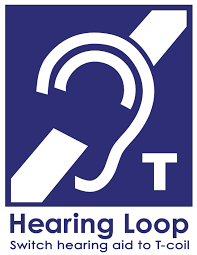The Vegas Nerve and Polyvagal Theory
This nerve is the longest cranial nerve in our body. It travels from our brain stem medulla oblongata, with an in and an out, down threading and branching out into our torso including our, lungs, heart, and arms and down to our stomach, and bowels and ends in our large intestine. There are two parts two it, the in and the out. They are called different names and perform different tasks. They join at the esophagus to form the vagal trunk.
Stress and how it can effect hormones
In times of stress our bodies are equipped for survival. Our fight/flight response will activate and our brain starts to respond from a different place. Stress can lead our brain to feel we are in danger and it will respond, which then makes our body respond.
• The adrenal gland produces adrenaline. Adrenaline inhibits us from utilizing the hormone progesterone. It also causes the pituitary gland to produce high levels of prolactin.
• The adrenal gland produces cortisol. However adrenal glands cannot make cortisol without progesterone, referred to as the ‘progesterone steal’ to manufacture stress hormones, therefore progesterone levels drop. GnRH is also inhibited.
• The pituitary gland releases high levels of prolactin (hyperprolactinemia). It can also cause a deficiency in the amount of progesterone produced after ovulation which can result in a uterine lining that is less able to have an embryo implant. Men have been known to lactate at times of high levels of stress.
Our mind body link is evident here and although we cannot see what is happening, we do see the results.
The part of the brain that responds to trauma is called the Amygdala, sometimes referred to as the reptilian part of our brain. It is with us since birth, and is about the size of a shelled peanut! And doesn't change. It has a crucial role in our survival and emotional processing, it reacts automatically with our environment including our fear and stress responces. It is a sensory hub processing information from the body. When faced with a traumatic situation it will be focused on keeping you alive. It wil rapidly process the information and assess for threats trigering an immediate fear response to the hypothalamus to activate the body's fight or flight system. Even if it is a perceived threat, like; "spider!", that is enough to set the process in motion.
Other parts of the brain need to respond to the fear response, parts like the pre frontal cortex (PFC), but their communication is slow-developing and are a bidirectional circuit. The amygdala acts as an alarm and the PFC gives context and control, however in high stress situation the amygdala can overide the PFC. Therefor, once the danger has passed, the response is no longer needed then the PFC is no longer overidden and is confused and wondering what just happened.
We can learn to calm that part of your brain, but first we need to become aware of the response. That means becoming aware of the trauma we have suffered, which is hard because sometimes we hide what we have suffered because of shame and we just don't want to relive it.
Breathing is an excellent way to calm that part of the brain, once we recognise we are in it. The technique isn't hard to follow, you breath deeply in through your nose for a count of 4, or till you see your belly rise. Then breathing out through your mouth for a count of 4, it must be through your mouth, that is the action that calms the trauma response by slowing your heart rate. This is very effective. It is aka diaphragmatic breathing because it engages our diaphragm muscle, we don't always utilise this muscle and use chest breathing while we are busy etc.
This helps with night terrors, feeling disconnected, feeling rage, feeling confusion and ultimately panic. If you feel aware you do not react with panic, there is an other response to trauma, which involves a shut down of all emotions and a numbing of the sensations.
This system that I am describing is the PolyVagal Theory. There are two distinct states one relating to trauma response and the other to social state. They are called Dorsal Vagal complex and the Ventral Vagas complex, respectively. These states can be harnessed to help us deal with trauma and the after effects.
Shame becomes a trauma response because it is part of our primary survival. If we do not know what our tribe are doing, or accepting, we risk being an outsider and this has a massive impact on our survival. Think of the way we can feel if we are the only one in the office who does not watch the soap, it can be very isolating. Or the infamous episode of Friends, when Rachel starts to smoke so she could find out stuff, which otherwise would be unavailable to her.
I have dedicated a tab to shame, take a look. We need to identify shame, so we can harness it's knowledge, but also so we can control the overwhelm it can cause.



